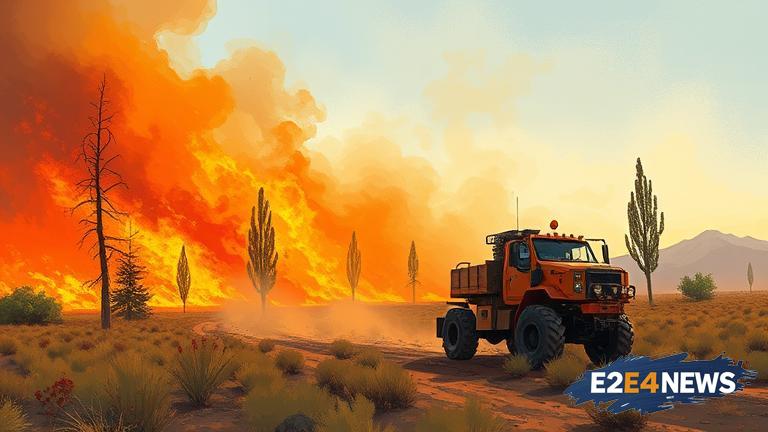A team led by the University of Texas has advanced in a competition to develop autonomous systems for detecting and suppressing high-risk wildfires. The team, which includes researchers from various institutions, has been working on a project to create a system that can autonomously detect and suppress wildfires using unmanned aerial vehicles (UAVs) and other technologies. The competition, which is sponsored by a government agency, aims to encourage the development of innovative solutions for wildfire detection and suppression. The UT-led team has made significant progress in the competition, having successfully demonstrated the effectiveness of their system in a series of tests. The system uses a combination of sensors, cameras, and other technologies to detect wildfires and predict their spread. Once a wildfire is detected, the system can deploy UAVs to drop fire suppressants and help contain the fire. The team has also developed advanced algorithms for predicting wildfire behavior and identifying areas of high risk. The system has the potential to revolutionize the way wildfires are detected and suppressed, and could help save lives and reduce property damage. The UT-led team is one of several teams competing in the competition, and the winner will receive a significant prize and funding to further develop their system. The competition is ongoing, and the teams are continuing to refine and improve their systems. The UT-led team is confident that their system has the potential to make a significant impact in the fight against wildfires. The team’s success in the competition is a testament to the innovative research being conducted at the University of Texas and its partner institutions. The development of autonomous systems for wildfire detection and suppression is a rapidly evolving field, and the UT-led team is at the forefront of this research. The team’s work has the potential to benefit not only the state of Texas but also other regions prone to wildfires. The use of UAVs and other autonomous systems for wildfire detection and suppression is a relatively new area of research, but it has shown significant promise in recent years. The UT-led team’s system is one of the most advanced in the competition, and it has the potential to be deployed in real-world scenarios in the near future. The team is continuing to refine and improve their system, and they are working closely with government agencies and other stakeholders to ensure that it is effective and safe. The UT-led team’s success in the competition is a significant achievement, and it demonstrates the university’s commitment to innovative research and development.
